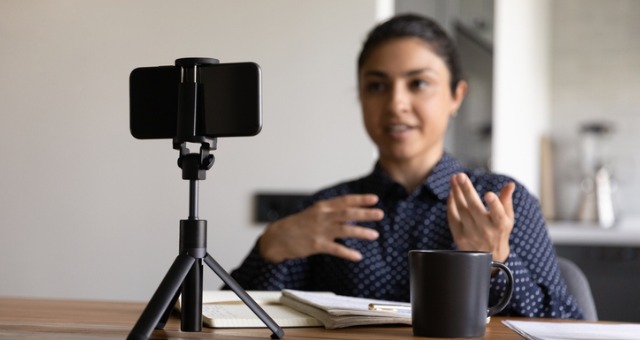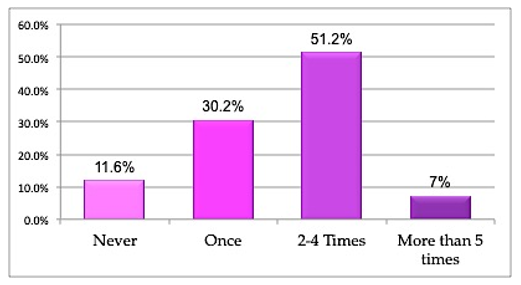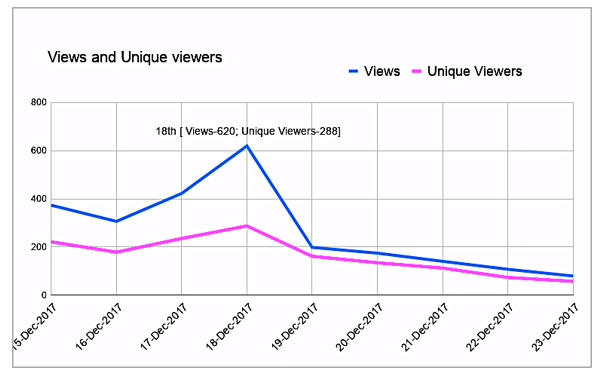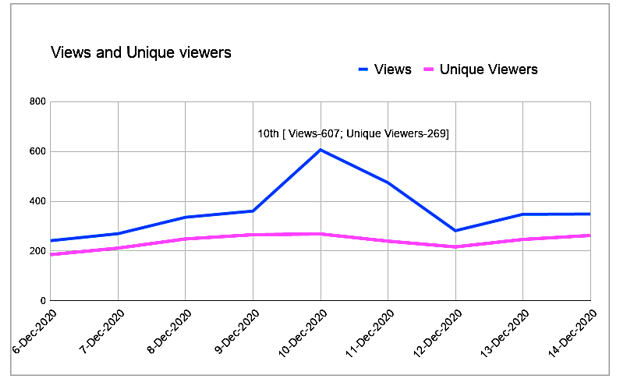Recent technology and internet presence have become an essential part of education and classroom learning. Interactive multimedia, audio/video tutorials, and asynchronous content have taken center stage in discussions around pedagogy. As we moved to online learning during the COVID-19 pandemic, instructors searched for pedagogical tools to make the transition more student-friendly. Screencast tutorials is one such tool that has built a strong reputation over time as an effective and powerful way to teach, present, and communicate with students.
A screencast generally consists of a recording of the computer screen, along with the instructor’s commentary. Although easy to produce, this visual and auditory format is an excellent way to narrate presentations, explain concepts, answer students’ questions, and demonstrate how to use software and navigate websites. Screencast videos have been shown to help students gain a deeper understanding of the material and also to enhance their engagement with the course content.
Many theories provide the basis for developing and using screencast tutorial videos as a pedagogical tool in online courses. One such theory is the cognitive theory of multimedia, which explains the benefits of integrating education with multimedia for online learners, especially through screencasting’s audio-video format. An empirical study by Lloyd and Robinson (2012) compared the effectiveness of text tutorials and screencasts. It showed that screencasts were a more effective learning tool for imparting higher-order, conceptual knowledge. The authors attributed their success to the dual learning channels (i.e., visual and verbal processing) that screencasts provide. Another study showed screencast videos to be an essential resource during exams which significantly improved student performance (Green et al., 2012).
How do students respond to these videos?
If screencast videos are made available to students earlier, they can review the concepts before class meetings. The time together can then be better used to engage students through problem-solving, discussions, and debates (Malhotra, 2019).
We know that students used audio-visual media even before the COVID-19 move to online teaching. The number of viewers and subscribers to YouTube channels that host video tutorials by instructors provides strong evidence of students’ preference for this video content. For example, Professor Allen Sens from the political science department at the University of British Columbia specializes in international security; most of his lectures on YouTube have 200,000 views or more, and more than 25,000 people subscribe to his channel. Another example is from the statistics from my YouTube channel: The most popular video on the Ricardian model has 120,000 views.
To further understand the importance of asynchronous video, we should explore students’ viewing behavior in more detail. This wasn’t hard to assess; several students were eager to share their experience, and according to them, screencasts made the subject appealing and enjoyable.
The following information uses statistics from an online survey for an undergraduate course and YouTube analytics to highlight the use and benefits of videos. In an information-gathering exercise, a class of 80 students taking a first-year undergraduate course in economics were asked to provide feedback in an anonymous survey at the end of the academic semester. The survey was voluntary and administered after the final course grades were submitted for all students.
The characteristics of a video make it an excellent pedagogical tool. Here’s why:
- The ability to play and replay: The student survey asked how often the respondent replayed the screencast videos. Roughly half of them re-played the videos two to four times.
The above results are also supported by the YouTube analytics below. Looking at the 2013 viewership data for my YouTube channel, the biggest peak in viewership was the day before their final exam, where 157 students (as per IP addresses or cookies) watched the tutorial 294 times.
2. The ability to access the content when it is needed, such as when students are reviewing and preparing for exams: Students rely on these videos for multiple reasons. Table 1 lists the results from the student survey on the main reasons why students viewed the video. Like earlier studies, reviewing for exams was the main reason most students viewed these videos, followed by further clarification of the content.
3. Students are not bound by time zones or geography: Learners in over 50 countries have viewed the videos on my channel. The following table shows the viewership in the top six countries between 2013 and 2019. I teach at a Canadian university, and there are many commonalities with US and Canadian courses, including textbooks and course content which explains the higher viewership in these two countries. My Indian accent (more reflective of the northern part of the region) might explain why India features third on the list.
A simple screencast tutorial is easy to create and takes no more than 15 minutes to learn and understand. There are many types of downloadable screen capture software—such as this free chrome extension, screencastify—that instructors can use. These videos can be recorded, edited, and shared directly from the browser. Asynchronous screencast videos are an easy solution for teaching online as they are easy to develop and can be viewed by students living in different time zones.
Nisha Malhotra, PhD, is an associate professor of economics in the education leadership stream at the University of British Columbia. Malhotra received an MA from the Delhi School of Economics (DSE) and a PhD from the University of Maryland (ECON), College Park.
Malhotra is a strong advocate of using social media and new technologies in higher education and developed the first blended learning version of the introductory microeconomics course (offered in 2014). A percentage (roughly 10%) of traditional lecture-style classes has been substituted with online learning and video tutorials, freeing class time for problem-solving and active learning. Malhotra’s YouTube education channel focuses on economics and serves as a resource for students at UBC and beyond. Her research is of an inter-disciplinary social scientist with a strong interest in population, gender, and health questions. Her recent work focuses on maternal and child health in India.
References
Green, K, Pinder-Grover, T & Millunchick, J. M. (2012). Impact of Screencast Technology: Connecting the Perception of Usefulness and the Reality of Performance. Journal of Engineering Education, 101, 717–737
Lloyd, S.A., & Robertson, C.L. (2012). Screencast Tutorials Enhance Student Learning of Statistics. Teaching of Psychology, 39(1), 67-71
Malhotra, Nisha (2019). “Implementing Active Learning and Student-Centered Pedagogy in Large Classes,” Faculty Focus.
Mayer, R. E., Fennell, S., Farmer, L., , & Campbell, J. (2004). A Personalization Effect in Multimedia Learning: Students Learn Better When Words Are in Conversational Style Rather Than Formal Style. Journal of Educational Psychology, 96, 389-395.









